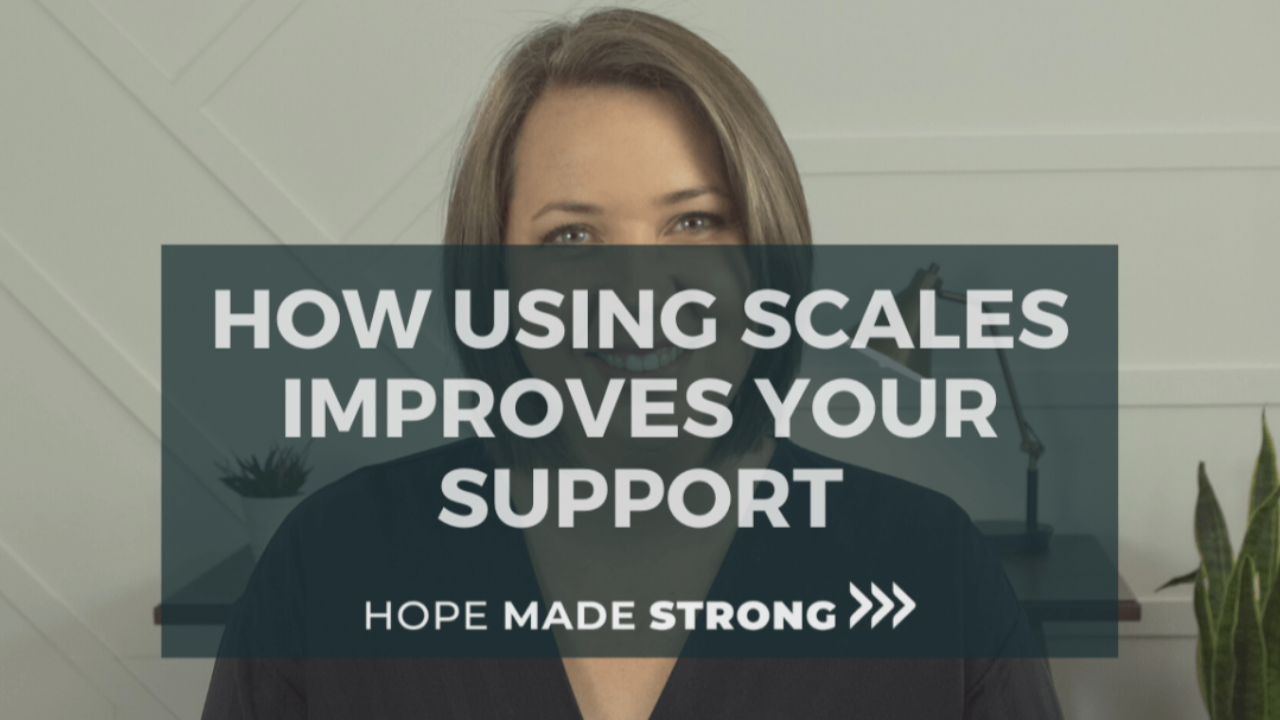USING SCALES TO SUPPORT
Dec 20, 2022
When someone asks you
“How are you feeling today?”
Your automatic response is to say “fine”.
But what if your asked the question
“From 1-5 how are you feeling today?”
Now, in order to answer that… you need to stop, think, reflect, and evaluate.
When I was working at a mental health clinic I was walking someone out after our 1-hour session. They ran into someone they knew in the hall. Of course the polite and expected question was asked of them. “How are you doing?” As I was walking back to my office I paused a minute to hear what the response was going to be. This individual just spent the last hour pouring out trauma and suffering that was leading to their suicidal thoughts. But of course, her answer was “I’m fine, how are you.”
This person was far from “fine”, but the “I’m fine” response is so hardwired that we almost can’t help ourselves, but answer in that way.
Some common goals when supporting people is to improve their quality of life, sort through tragedy to find life and meaning or even to discover purpose and strength with their current circumstances. But each of these goals requires wading through emotions, feelings and thoughts. Things that are often difficult to describe and even more difficult to measure.
BY USING SCALES IN OUR SUPPORT WORK WE ARE ABLE TO DO THREE THINGS.
-
EXPAND LIMITED VOCABULARY TO DESCRIBE EMOTIONS AND FEELINGS.
-
SHIFT FROM VAGUE SUBJECTIVE DESCRIPTIONS AND APPLY A MEASURABLE FIGURE.
-
AND THIRDLY WE ARE ABLE TO MORE ACCURATELY ASSESS WHERE THE PERSON WE’RE SUPPORTING IS AT IN THEIR JOURNEY.
#1 EXPANDING LIMITED VOCABULARY
Numbers are passive. They are neither good or bad. Numbers only have meaning when their significance is applied. A 9 is really high when the scale is out of 10, but really low when it is out of 100
Choosing a number to represent how someone is feeling is a lot easier than describing an emotion. Numbers are neutral, emotions are packed with baggage.
Many cultures do not encourage the expression of emotion and so people are left with a simplified vocabulary of what they are feeling. If what they are feeling doesn’t fit in the categories of happy, sad, or angry then it is very difficult to express.
By using a number, we are taking away some complexities of vocabulary and defining an emotion in a way that is easier for the individual to identify.
#2 SHIFT FROM VAGUE SUBJECTIVE DESCRIPTIONS AND APPLY A MEASURABLE FIGURE
Color scales simplifies the process of describing emotions. By using a green, yellow and red scale people can self identify where they are at.
I often describe green as feeling really “good-to-go” positive energy, excited about life and red as being in crisis. Yellow obviously somewhere in between.
However, when I was meeting with a young child I asked them to describe how they are feeling in a colour and they choose purple, a mix of red and blue and they went on to describe what blue and red meant.
These conversations are very valuable. You begin to hear about triggers, stressors, and warning signs. In this context, people often identify strengths or supports that they are using that they would otherwise have difficulty identifying when asked directly.
In describing why they chose that number or color people are often able to bring great insight and begin to point out their own barriers and strengths.
#3 SCALES ALLOW YOU TO MORE ACCURATELY ASSESS WHERE THE PERSON IS IN THEIR JOURNEY.
Fairly often a person will come in for a support session with a specific issue identified but the first 15 minutes they keep talking about something completely different.
It would be tempting to either cut them off and ask about the initial reason for the meeting or abandon the initial purpose and continue on with the current topic.
However, this is a great opportunity to use a scale.
Ask the person to rate out of 1-10 how much distress the issue is causing them. And then ask about the initial issue. This allows you to find out if there is a new and more pressing issue or if they are just avoiding a difficult conversation.
This can also be helpful if the person you support continues to go on rabbit trails and the meetings are getting longer and longer.
Using scales is a great way to get a more accurate picture and allows you to direct your support efforts.
So, at your next support meeting, if the person is having difficulty describing their feelings, or the meeting is lacking focus or if it’s a struggle to keep people on track, use a number or color scales as it provides common ground and language to build upon.
Click the link to download the Green, Yellow and Red scale template
https://www.hopemadestrong.org/green-yellow-red-scale

